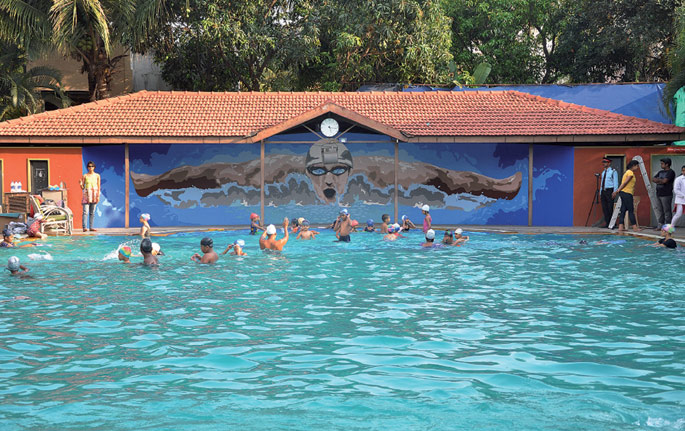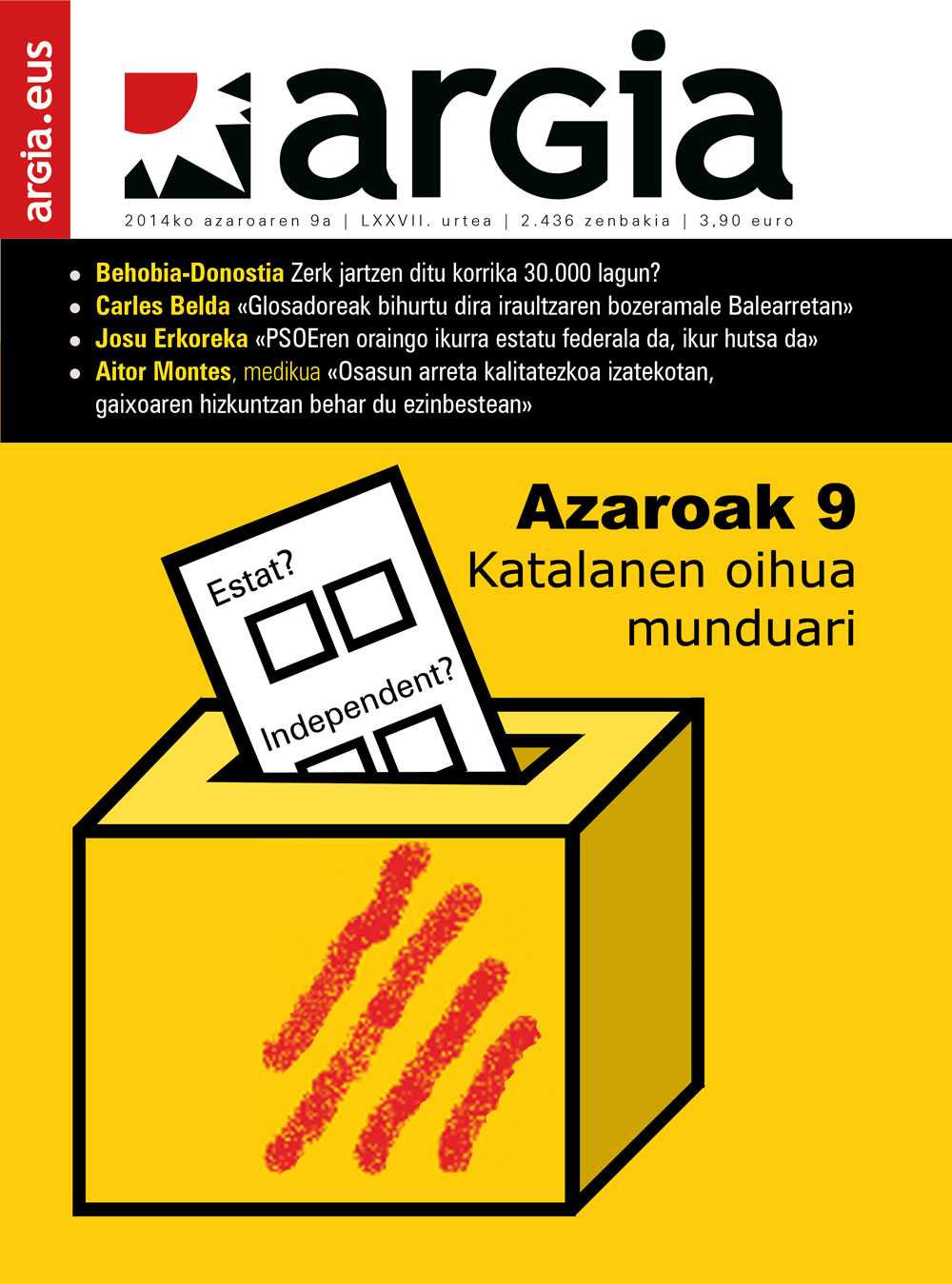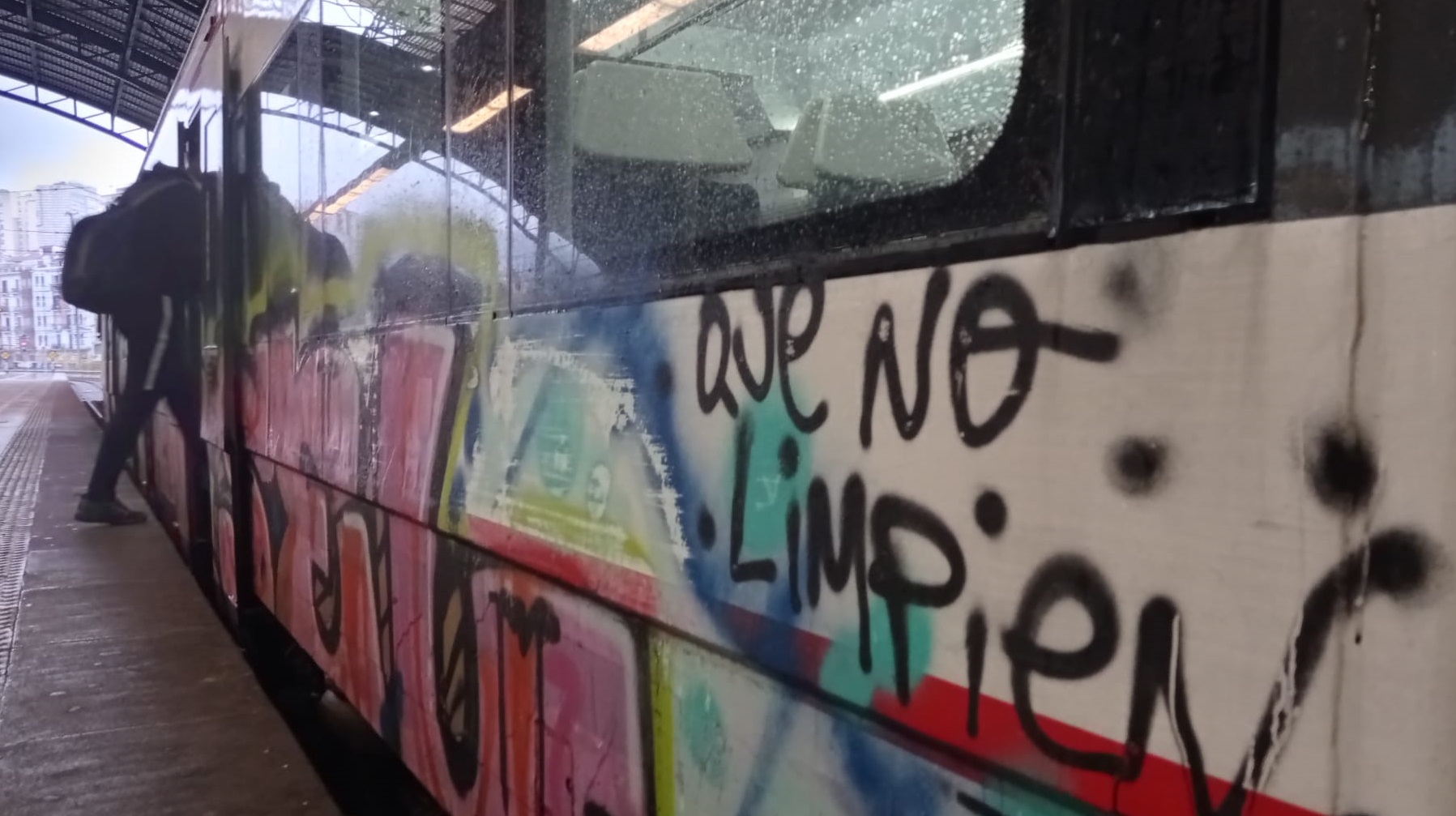Street transformation through murals
- The muralism company Artefactory, founded two years ago by three young people, has been transformed over this time into 2,100 m2 of 18 cities in the world, through 100 murals in cities like Madrid, Bombay or Shanghai. The largest work of Euskal Herria, a mural of about 500 m2 and 28 meters high, was created in Deba.

In Donostia-San Sebastián is Artefactory, a company dedicated to the art and design of the walls. It was created two years ago by three young people who met at the university, and since then, different projects have been carried out. According to Martín Unzueta, one of the three creators, during this time many images have been created among his clients: Restaurants, municipalities, gyms, day care centers, small shops and others.
One of the most recent projects has been carried out at Deba. It is the largest mural in the Basque Country, with a length of 28 meters and an area of 500m². “In addition, being at the entrance of the town and next to the beach, it is even more spectacular” says Unzueta. They have done a number of work in the past. For example, in the akellarre restaurant of Pedro Subijana, in Kutxa, at the request of the company Beffeater, in the Urbil mall, Mr. In the villages of Goldwin, Deba and Segura...: “We have done most of our work in Gipuzkoa, one or more in Bizkaia, but we have also had the opportunity to work outside Euskal Herria.”
Thanks to the University, they had the opportunity to travel to China and India “to know the ecosystem of local companies and carry out our projects in those countries. In China, and especially in India, our work has been very well received and we have made many murals there,” Unzueta explained. On the other hand, Artefactory has been able to work with advertising agencies. An example of this is the mural that they have created at the request of the Beefeater company and that has been designed.
Dead walls, living walls
Murals in Segura or Deba have transformed the daily landscape of these peoples. The public space acquires a new dimension thanks to these images and, conversely, the mural acquires another meaning when it is located in the street. “What fills us most is the attitude of people towards our murals. To keep looking, pay attention, smile when passing, to joke a little the way to work or school, to improve the environment by creating feelings and good sensations,” explains Artefactory. “Our work makes full sense on the street. We’ve worked a lot for private individuals, and creating that feeling at home or at work is amazing, but these jobs take another dimension on the street.”
We have asked Martin Unzueta de Artefactory about the difficulties these large-scale projects have: “Every job has its things. In the case of Deba, for example, against the building we painted there was another building, but it collapsed and the facade stayed in the air. The wall was therefore very bad, covered with polyurethane and very abrupt. One of the biggest difficulties was wall adequacy. The most important part of the great murals is the well-surveyed and well-dimensioned drawing. In fact, it’s easier to do metro details than millimeters.”
Despite their youth, Artefactory painters have 20 years of experience in murals and graffiti. “We are able to do all kinds of styles. However, in most cases, the client expresses his desire and we make the design accordingly. We try to advise what we think can be the best, what color to use, what style… we reproduce the design with the client,” explains Unzueta.
However, painting the walls means, in Artefactory’s opinion, fighting against various prejudices: “Working with graffiti can still have many negative connotations. However, there is also a constructive trend, a favorable awareness is being created, and I would say that this art is increasingly known and valued.”
Behin batean, gazterik, gidoi nagusia betetzea egokitu zitzaion. Elbira Zipitriaren ikasle izanak, ikastolen mugimendu berriarekin bat egin zuen. Irakasle izan zen artisau baino lehen. Gero, eskulturgile. Egun, musika jotzen du, bere gogoz eta bere buruarentzat. Eta beti, eta 35... [+]
This text comes two years later, but the calamities of drunks are like this. A surprising surprise happened in San Fermín Txikito: I met Maite Ciganda Azcarate, an art restorer and friend of a friend. That night he told me that he had been arranging two figures that could be... [+]
On Monday afternoon, I had already planned two documentaries carried out in the Basque Country. I am not particularly fond of documentaries, but Zinemaldia is often a good opportunity to set aside habits and traditions. I decided on the Pello Gutierrez Peñalba Replica a week... [+]
























